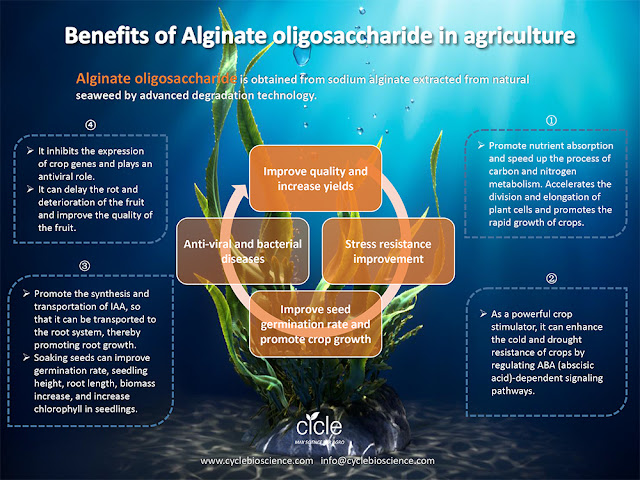Foliar spraying of Alginate oligosaccharides restores growth of wheat under chlorpyrifos stress

Chlorpyrifos, as an organophosphorus insecticide and acaricide, is suitable for the control of various chewing and sucking mouthparts pests such as wheat. However, excessive use will lead to changes in crop soluble proteins, glutathione-S-transferase, glutathione peroxidase, etc., resulting in pesticide stress, thereby affecting crop growth. In 2015, Zhang Shoudong, Northwest Institute of Plateau Biology, Chinese Academy of Sciences, etc. published an article "Effects of Alginate Oligosaccharides on Physiological and Biochemical Indexes of Wheat Seedlings Under Chlorpyrifos Stress". In this experiment, spraying 0.4% concentration of Alginate oligosaccharides significantly alleviated the decrease of chlorophyll content and wheat biomass in wheat seedlings under chlorpyrifos stress, inhibited the increase of proline, soluble protein and soluble sugar content, and enhanced wheat Resistance to chlorpyrifos stress. Test Results: (Note: CK: distilled water treatment, T0-T4:...





